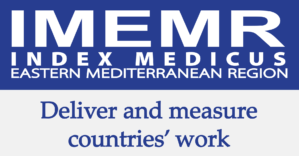Cardiovascular Effects of Nigella Sativa on Isolated Rabbit Heart and its Impact on Cardiac Remodeling
DOI:
https://doi.org/10.53685/jshmdc.v3i2.11Keywords:
Cardiac remodeling, Apical force, Ischemia and ReperfusionAbstract
Background: Black Cumin/Nigella sativa (NS) which belongs to the botanical family of Ranunculaceae commonly grows in Eastern Europe, the Middle East, and Western Asia. Its prolonged use can produce physiological changes with or without affecting the architecture of different organs like the heart (cardiac remodeling). The data for the cardiovascular benefits of black cumin are not well-established scientifically.
Objectives: To determine the direct cardiovascular effects of Nigella Sativa extract on heart rate, cardiac contractility (apical force), ECG, and coronary flow in the normal heart with and without cardiac remodeling.
Methods: This experimental study was conducted on forty-two (42) rabbits. These rabbits were divided into seven groups, each comprising six animals (Group I-VI without cardiac remodeling and Group VII with cardiac remodeling). NS was given to these groups in different doses i.e., Group I (NS=10ug), Group II (NS=30ug), Group III (NS=100ug), Group IV (NS=300ug), Group V (NS=3000ug), Group VI (NS=10000ug) and VII (NS=300ug). Radnoti's working heart system was used to determine the effects of NS on heart rate, cardiac contractility (apical Force), ECG, and coronary flow in a normal heart with and without cardiac remodeling. The results were analyzed using SPSS version 28.
Results: Results of this study revealed negative chronotropic and positive inotropic effects without ECG changes in the normal heart and with ECG changes in the remodeled heart.
Conclusions: Prolonged use of Nigella sativa can lead to disturbed ECG by affecting the conducting tissue.
References
Jones VA, Patel PM, Wilson C, Wang H, Ashack KA. Complementary and alternative medicine treatments for common skin diseases: A systematic review and meta-analysis. JAAD international. 2021; 2:76-93. doi: 10.1016/j.jdin.2020.11.001. DOI: https://doi.org/10.1016/j.jdin.2020.11.001
Dabeer S, Rather MA, Rasool S, Rehman MU, Alshahrani S, Jahan S, et al. History, and traditional uses of black seeds (Nigella sativa). Khan A, Rehman M (eds) In Black Seeds (Nigella Sativa). Pharmacological and Therapeutic Applications 2022: 1-28. Elsevier. doi:10.1016/B978-0-12-824462- 3.00016-0. DOI: https://doi.org/10.1016/B978-0-12-824462-3.00016-0
Padhye S, Banerjee S, Ahmad A, Mohammad R, Sarkar FH. From here to eternity - the secret of Pharaohs: Therapeutic potential of black cumin seeds and beyond. Cancer Ther. 2008; 6(b): 495-510.
Cohn JN, Ferrari R, Sharpe N. Cardiac remodeling-- concepts and clinical implications: a consensus paper from an international forum on cardiac remodeling. Behalf of an International Forum on Cardiac Remodeling. J Am Coll Cardiol. 2000; 35(3): 569-582. doi: 10.1016/s0735- 1097(99)00630-0.
Basile JN. Halting the progression of heart failure: finding the optimal combination therapy. Cleve Clin J Med. 2002; 69(2): 104-5, 109-10, 112. doi: 10.3949/ccjm.69.2.104. DOI: https://doi.org/10.3949/ccjm.69.2.104
Hadi V, Pahlavani N, Malekahmadi M, Nattagh-Eshtivani E, Navashenaq JG, Hadi S, et al. Nigella sativa in controlling Type 2 diabetes, cardiovascular, and rheumatoid arthritis diseases: Molecular aspects. J Res Med Sci. 2021; 26(20): 1-14.
Al-Hader A, Aqel M, Hasan Z. Hypoglycemic effects of the volatile oil of Nigella sativa seeds. Int J Pharmacogn. 1993; 31(2): 96-100. Doi: 10.3109/13880 209309082925 DOI: https://doi.org/10.3109/13880209309082925
Khan MAU, Ashfaq MK, Zuberi HS, Mahmood MS, Gilani AH. The in vivo antifungal activity of the aqueous extract from Nigella sativa seeds. Phytother Res: 2003; 17(2): 183-186. doi: 10.1002/ptr.1146 DOI: https://doi.org/10.1002/ptr.1146
Al-Hariri MT, Yar T, Bamosa AO, El-Bahai MN. Effects of two-month Nigella sativa supplementation on cardiac haemodynamics and adrenergic responsiveness. JPMA. 2009; 59(6): 363-368.
Shimizu I, Minamino T. Physiological and pathological cardiac hypertrophy. JMCC. 2016; 97: 245-262. doi: 10.1016/j.yjmcc.2016.06.001 DOI: https://doi.org/10.1016/j.yjmcc.2016.06.001
Nakamura M, Sadoshima J. Mechanisms of physiological and pathological cardiac hypertrophy. Nat. Rev. Cardiol. 2018; 15(7): 387-407. doi:10.1038/s41569-018-0007-y DOI: https://doi.org/10.1038/s41569-018-0007-y
Lindsey ML, Bolli R, Canty Jr JM, Du XJ, Frangogiannis NG, Frantz S, et al.. Guidelines for experimental models of myocardial ischemia and infarction. Am. J. Physiol. Heart Circ. 2018; 314(4): H812- H838. doi: 10.1152/ajpheart.00335.2017 DOI: https://doi.org/10.1152/ajpheart.00335.2017
Al-Hariri MT, Yar T, Bamosa AO, El-Bahai MN. Effects of two-month Nigella sativa supplementation on cardiac haemodynamics and adrenergic responsiveness. JPMA. 2009; 59(6): 363-368.
Shakeri F, Boskabady MH. A review of the relaxant effect of various medicinal plants on tracheal smooth muscle, their possible mechanism (s) and potency. J. Ethnopharmacol. 2015; 175: 528-548. doi:10.1016/j.jep.2015. 10.017 DOI: https://doi.org/10.1016/j.jep.2015.10.017
El-Obeid A, Maashi Y, Alatar G, Aljudayi M, Al-Eidi H, AlGaith N, et al. Herbal melanin modulates PGE2 and IL-6 gastroprotective markers through COX-2 and TLR4 signaling in the gastric cancer cell line AGS. 2022; 1-20. doi: 10.21203/rs.3.rs- 1597711/v1 DOI: https://doi.org/10.21203/rs.3.rs-1597711/v1
Tabassum S, Rosli N, Ichwan SJ, Mishra P. Thymoquinone and its pharmacological perspective: A review. Pharmacological Research-Modern Chinese Medicine. 2021; 1:100020.doi:10.1016/j.prmcm.2021.100020 DOI: https://doi.org/10.1016/j.prmcm.2021.100020
Xing S, Nong F, Qin J, Huang H, Zhan R, Chen W. Gentiopicroside Produces Endothelium-Independent Vasodilation by Deactivating the PI3K/Akt/Rho-Kinase Pathway in Isolated Rat Thoracic Aorta. Biomed Res Int. 2021; 2021: 5565748. doi: 10.1155/2021/5565748. DOI: https://doi.org/10.1155/2021/5565748
Asoom LIA, Al-Hariri MT. Cardiac Inotropic Effect of Long-Term Administration of Oral Thymoquinone. Evid Based Complement Alternat Med. 2019; 2019: 8575136. doi: 10.1155/2019/8575136. DOI: https://doi.org/10.1155/2019/8575136
Mariano LN, Boeing T, da Silva RD, da Silva LM, Gasparotto‐Júnior A, Cechinel‐ Filho V, de Souza P. Exotic medicinal plants used in Brazil with diuretic properties: A Review. Chem Biodivers. 2022; 19(6): e202200258. doi:10.1002/cbdv.202200258 DOI: https://doi.org/10.1002/cbdv.202200258
Hadi V, Pahlavani N, Malekahmadi M, Nattagh-Eshtivani E, Navashenaq JG, Hadi S, Ferns GA, Ghayour-Mobarhan M, Askari G, Norouzy A. Nigella sativa in controlling Type 2 diabetes, cardiovascular, and rheumatoid arthritis diseases: Molecular aspects. J Res Med Sci. 2021; 26: 20.doi: 10.4103/jrms.JRMS_236_20. DOI: https://doi.org/10.4103/jrms.JRMS_236_20
de Souza Sampaio R, de Oliveira GA, Vasconcelos LH, Ferreira PB, Silva MD, Tavares JF, et al. Vasorelaxation in rat pulmonary artery induced by the monoterpene thymol: evaluation of the endothelium derived relaxant factors dependence. Research, Society and Development. 2021; 10(4): e29010413971. doi: 10.33448/rsd-v10i4.13971. DOI: https://doi.org/10.33448/rsd-v10i4.13971
Maisch B. Ventricular remodeling. Cardiology. 1996; 87(Suppl. 1): 2-10. doi:10.1159/000177159 DOI: https://doi.org/10.1159/000177160
Cohn JN, Ferrari R, Sharpe N, an International Forum on Cardiac Remodeling. Cardiac remodeling—concepts and clinical implications: a consensus paper from an international forum on cardiac remodeling. J Am Coll Cardiol. 2000; 35(3): 569-582.doi:10.1016/s0735-1097(99)00630-0. DOI: https://doi.org/10.1016/S0735-1097(99)00630-0
Al-Asoom LI, Al-Shaikh BA, Bamosa AO, El-Bahai MN. Effect of Nigella sativa supplementation to exercise training in a novel model of physiological cardiac hypertrophy. Cardiovascular toxicology. 2014; 14(3): 243-250. doi: 10.1007/s12012-014-9248-0 DOI: https://doi.org/10.1007/s12012-014-9248-0
Downloads
Published
How to Cite
Issue
Section
License
Copyright (c) 2022 Abdul Shabbir Ali Bhatti, Aliya Shabbir, Muhammad Kashif Butt, Muhammad Ahmed Bhatti, Muhammad Usman, Dr.Abdul Karim

This work is licensed under a Creative Commons Attribution-NonCommercial 4.0 International License.
You are free to:
- Share — copy and redistribute the material in any medium or format
- Adapt — remix, transform, and build upon the material
- The licensor cannot revoke these freedoms as long as you follow the license terms.
Under the following terms:
-
Attribution — You must give appropriate credit, provide a link to the license, and indicate if changes were made. You may do so in any reasonable manner, but not in any way that suggests the licensor endorses you or your use.
-
Non Commercial — You may not use the material for commercial purposes.
-
No additional restrictions — You may not apply legal terms or technological measures that legally restrict others from doing anything the license permits.




















